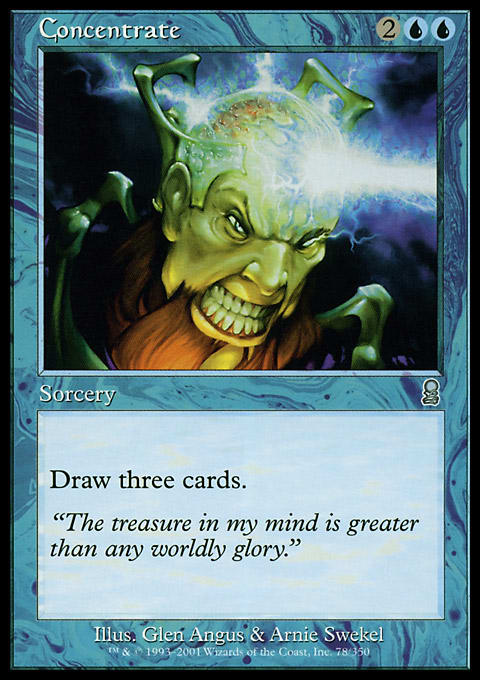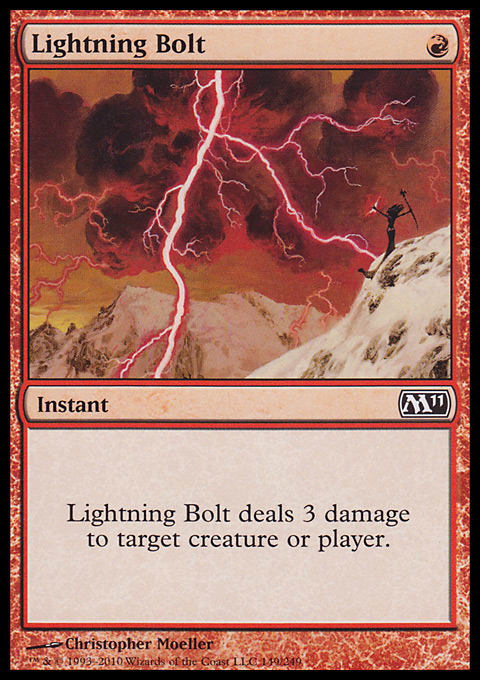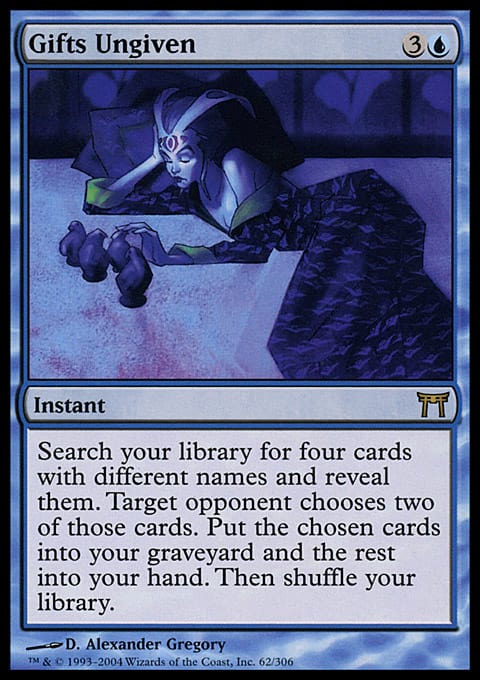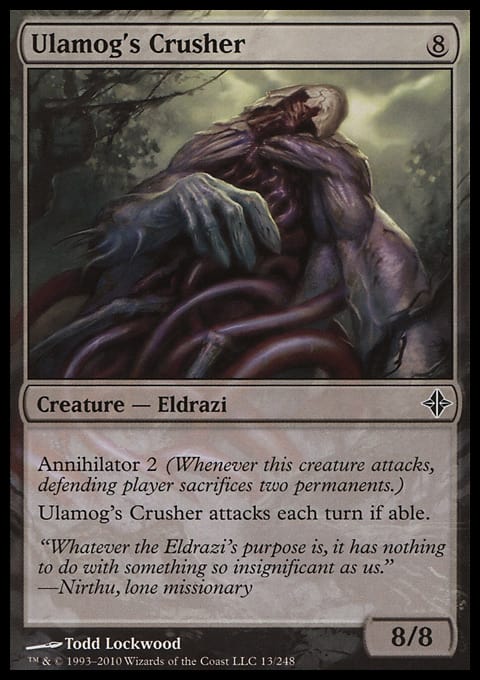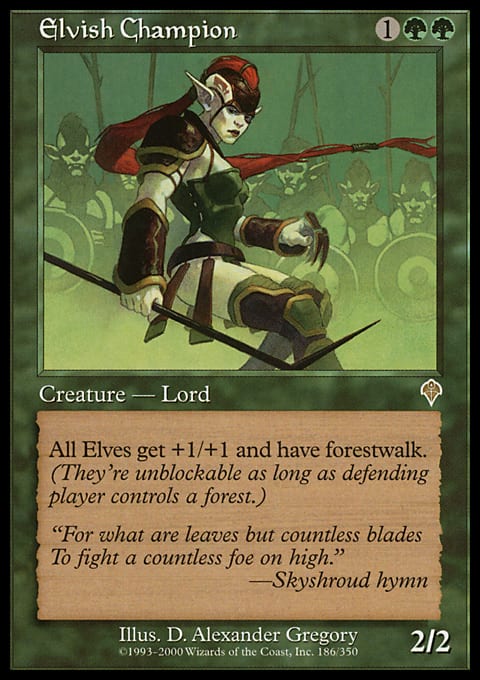In some major ways, Magic Online has changed the game we love so dearly. It certainly changed tournaments, but even casual players like me have seen an impact from Magic Online. One of the impacts it had made is the introduction and standardization of casual formats. By making everyone play by the same rules online, many formats have been streamlined.
What formats are online? If you have Magic Online, today I want to walk you through the various formats so you can see what’s available. Some formats are well known, and others are obscure. If you don’t play Magic Online, you can still use this as a list of formats for you to try out in real life at your next Magic night.
Core Set Constructed
This format allows only cards that have been printed in any core set from Seventh Edition through the soon-to-be-released Magic 2013 and beyond. It has no banned and restricted list, and it still allows the normal sixty-card minimum and no more than four of any card save for basics.
Most of the online formats I have heard of prior to their becoming official formats, but this is certainly not one of them. I don’t know if it was new or based on a format I had never encountered. By only using core sets, you have all of the things each color needs. There are no Block weirdoes, such as counters in black, Harmonize, or all of the tricky Block mechanics.
Sixth Edition and prior core sets are not available online, so they are not included in the format. If you are going to play this format in real life, I actually do recommend that you stick with Seventh Edition and on because that set was when modern core set technology began.
Sixth Edition has a lot of cards you may not want in your format, such as Armageddon and Vampiric Tutor. The farther back you go, the more powerful the cards—including winners such as Strip Mine, Dark Ritual, and Balance.
While it might be nice to see something like Land Tax fight against a Primeval Titan ramp deck—and cards such as Abbey Gargoyles won’t cause any fuss at the table—I’d still recommend that you steer clear of any complicating issues by rolling with a Seventh Edition cutoff. That gives you Stone Rain, Counterspell, and Lightning Bolt, so there is power in this format.
Kaleidoscope
The concept of this format is simple. Every nonland card in your deck must be multicolored. It can include hybrid colors or split cards, and Transguild Courier probably counts, but they all have to be two or more colors.
There are just two banned cards: Glittering Wish and Anathemancer. Again, sixty-card decks and four-of rules apply. This creates a really quirky format that you need to play to understand. It’s based on an offline format called Chameleon Magic, which has been around for ages and only allowed gold cards. It used to be that gold cards often sucked, and that was a fun format, but now they really push the line, and you can make powerful decks where everything is multicolored.
In particular, there are enough counters, removal, and creatures on curve to really make these interesting. You’ll figure out some of power cards of the format, such as Supply // Demand, pretty quickly. This is a format both faster and slower than normal formats at the same time—it’s odd. Mana issues and a lack of good 1- and 2-drops slow you down. Then, your creatures jump ahead of the normal curve, with 4- and 5-power creatures on turn three and even bigger ones later. Woolly Thoctar says “hello.”
Singleton
One of the oldest formats in Magic is a format called Highlander. Based on the film with the tagline, “There can be only one,” the simple rule for this format is that you cannot have more than one copy of any card in your deck save for basics. Most people don’t realize that, in real life, Highlander is actually a real format with a banned list and such.
Online, it just has two rules. First, whenever you play, you use Standard-legal cards only. Second, you can’t have more than one of a given card except for nonbasic lands. Offline, this format is the pillar of mega-popular format Commander, which we’ll discuss in a bit. It’s what makes the format.
Most formats can be made better by making them Highlander. There is a variant called Hardcore Highlander, which forces you to play only one copy each of basic lands as well as the other cards. While that’s not much of a restriction at sixty cards, as you increase your deck size, Hardcore Highlander is increasingly interesting. Maybe that’s where your playgroup could go next.
100-Card Singleton
This is a variant of Singleton for online play that resembles Commander to a modern audience. Unlike Singleton using Standard, this uses Classic cards. Classic is Magic Online’s version of Vintage.
Frankly, I found all of this much easier to understand back when you used numbers and such—Type 1, Type 2, Type 1.5, and so on. It was a lot easier than Classic versus Vintage versus Legacy. How are three words based around the same concept any better than some numbers? Anyway, Classic uses the cards released online, which is does not include all of the cards released in Vintage.
It has an extensive banned list, which you can find here. While this may appear to be Commander-lite to modern audiences, and it was marketed that way to us, it more closely resembles the real Highlander format. You can find the rules to the actual Highlander format hither. When you check it out, you’ll see that it requires one hundred cards minimum and has its own banned list and uses Vintage-legal sets. That makes this 100-Card Singleton format virtually identical to the real Highlander format.
Commander
Since we’ve been discussing it, let’s just bring it into the picture. You can play Commander online—yay! Considering the bajillions of articles online about the format, there’s not much I can say here, so I’ll skip to the next format. I just wanted to let you know that we had it here, too.
Pauper
There have been several different formats down through the ages that used the rarity of a card (common, uncommon, and rare) to determine deck construction. One of the oldest versions was a format called Peasant Magic, which required all commons and basics save for five uncommons.
A simpler, cleaner version became known as Pauper, which removes the five uncommons. Every card must be a common or a basic land. That’s a pretty simple premise, and yet the decks can be quite interesting. There are Pauper combos, aggro, and control all built into the colors. A format without the abuses of planeswalkers, Titans, Skullclamps and other powerful cards is refreshing.
There are two cards that are too much in the format and are banned: Cranial Plating and Frantic Search. Even today, there are many adherents of Pauper, and you can find articles about it in various places. Just remember that as long as a card was printed as a common, you can play it. (Some cards were never printed as commons online, but instead were uncommon, so they cannot be played in the online format at all, such as Hymn to Tourach.)
Prismatic
We won’t spend too much time discussing Prismatic today because next week we’ll have an entire article dedicated to the subject. Prismatic is my favorite online casual format. The deck must be at least two hundred fifty cards with twenty cards of each color. All cards legal in Classic are legal here, but it has an extensive banned list to encourage different types of decks. You can find the banned list here. Because it’s the subject of a full article next week, I’ll skip past the normal. If you want to play it in the meantime or look it over, there’s the format for you.
Freeform
Freeform is a special format for Online in which there are no deck-building rules at all—except that your deck must be at least forty cards. Because it has no rules, it’s not a format in the traditional sense. Formats function by removing deck-building options. Those additional constraints breed creativity. Pauper bans you from using most of the cards in the game, Standard lets you use just the last few sets, and so on.
Since Freeform doesn’t have a single deck-building restriction beyond what is in the rulebook, you could argue that’s it’s not a format at all. That would be an interesting philosophical discussion about the nature of games and such, but instead, let’s just table it and consider it a format. If you want to build a broken deck, here is your opportunity!
Planeswalker
When you look at the lists of online formats, you see this. It’s not able to be played in real life that well. They made some decks you can buy online, and you can reuse those cards, but only those cards, for this format. And the cards can’t be used anywhere else because they have gold borders. I have to admit that it’s the only format I’ve not played—I don’t want to pay for cards (even with a cheap price tag) that I can’t use anywhere else. But the cards are cheap, so if you are interested, take it for a spin.
Tribal Wars, Legacy and Standard
This format received a major boost when these two versions came out on Magic Online. There had been many takes on a tribal-themed format, and countless versions of the rules existed, with no one set of rules dominating. Once Wizards of the Coast made these rules the default for online, the offline community gathered around them as well.
Whether it’s the Standard version you are playing or the Legacy version, at least one third of your deck must have the same creature type. There are no banned cards in Standard Tribal Wars, but the Legacy format does have an extensive list you can access here. I recommend starting with it if you decide to play Legacy Tribal Wars at your next Magic night. Play with it, and after a night, you can make modifications as you desire.
Maybe you want to pull off things such as Demonic Consultation and add Coat of Arms. Even today, there many offline fans of Tribal Wars, but the articles have been lacking on websites for a while. For years, we had regular columns, and you could find your Tribal fix, but I can’t recall seeing more than three articles in the past eighteen months. That means you have fresh territory to explore. From an Innistrad-fueled Zombie deck to a good, old-fashioned Goblin deck or even a crazy Drake deck, make it fun!
Momir Basic
This last format is going to need a bit of discussion, so let’s talk. It’s a format with a large injection of articles recently, so there’s much to read if you are interested. There was an old casual format for Magic called Vanguard, and cards released by WotC had you playing as different characters.
Based on whom you were playing as, you might start with more or fewer cards, have a different life total, or even have an ability that was used during the game. For example, here is Serra. As you can note, when you play as Serra, you begin with a starting grip of eight cards and 21 life, and your creatures all get +0/+2 for the game.
There were a variety of these sets made years and years ago, and they are hard to find. WotC decided to do the same thing online with avatars. For a long time, avatars that were released were also Vanguard characters with various abilities. You could include one in your deck and play Vanguard. Today, avatars don’t have Vanguard abilities, so there aren’t new ones printed. An old one was Momir Vig, and this format was built around that avatar.
To play Momir Basic, you need a deck of sixty basic lands of your choice and a Momir Vig Vanguard card. Momir Vig gives you 4 extra starting life, but seven cards. He also has a special ability:
When you play a Momir Basic deck, you make a random creature with Momir by discarding your land. Then, you fight with your creatures until one or the other player wins. If it sounds like fun, that’s good—it is! This is a really unique format that is a ton of fun to roll with. It may sound really hard to play offline, but many (including myself) have done so. I have a few boxes with some creatures separated by converted mana cost, and you just shuffle and pull one out. To make the rules simpler, I say that you use the actual card rather than a token copy of it. There’re so many reasons this is cleaner. Momir Vig is another fun format, so play some!
There’s also a bit of mixing and matching with these formats. You have people who want to play Pauper and Commander or Singleton and Tribal Wars. The most common formats to add to others are Singleton and Pauper. It’ easy to assemble a format with Singleton or Pauper tacked on. In fact, my super-favorite online format is not Prismatic per se, but Prismatic Pauper Singleton. It’s such a unique gaming experience! (It’s sometime abbreviated as PPS—my name for the offline version is Acid Magic because the abbreviations changed to 5PH for Five-Color, Pauper, and Highlander, and 5 is acidic on the pH scale.)
Online, you can only play what others want to play. While there are adherents of all of these formats, they aren’t always on. Magic Online is full of players readying for tournaments or playing in them. It’s not a format rife with a lot of casual players for the long term. On the day that I was writing this article, I tried to begin games against folks. Sometimes, you have to wait a bit. I fired off a Prismatic game in thirty seconds one time, but I had to wait about four minutes another time. Some are more popular than others. You can still take some decks out and try them. Maybe you’ll find a new favorite format!
Remember that next week is Prismatic Week here in Abe’s column.
See you next week,
Abe Sargent













